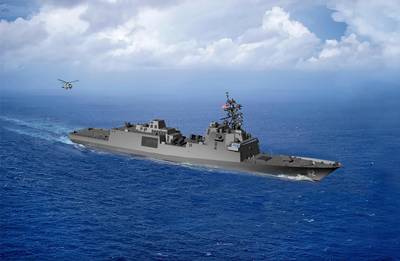Prefabrication of Federal Shipbuilding Project Funding
Initial appropriations discussions are underway for Fiscal Year 2022, with a continued focus on federal shipbuilding programs. It has been rough going for the Navy as Congress raised questions about the President’s commitment to the Navy’s long-term shipbuilding program. Meanwhile, House appropriators are seemingly focused on continuing shipbuilding successes at the Maritime Administration and Coast Guard. With billions of dollars in the balance, the U.S. shipbuilding industry should keep a close watch on the development of next year’s funding bills.
Congress builds on Navy budget proposal
On June 17, 2021, the Navy issued its Report to Congress on the Annual Long-Range Plan for Construction of Naval Vessels for Fiscal Year (FY) 2022. The report, which is required by statute to contain a detailed program for the construction of combatant, support and auxiliary vessels for the Navy over the next 30 fiscal years, instead focused on the President’s immediate FY 2022 budget request. This approach—focusing on the immediate request in lieu of a long-term plan—is typical of a new Presidential administration in its first year. The Navy’s proposed FY 2022 budget requested total funding of $18.1 billion for the construction of eight new ships, including two Virginia-class attack submarines (SSNs); one Arleigh Burke (DDG-51) class destroyer; one Constellation (FFG-62) class frigate; one John Lewis (TAO-205) class oiler; two TATS towing, salvage, and rescue ships; and one TAGOS(X) ocean surveillance ship. The report contained limited details on the Navy’s long-term shipbuilding plan, simply indicating a long term-fleet fleet ranging 321 to 372 manned battle force ships, together with 77 to 140 uncrewed vessels, with no specific timeline for development of the fleet provided in the report.
Subsequent discussions have seemingly dismissed the report fleet projections, and have instead remained focused on the 355-ship fleet in the Navy’s 2016 force structure assessment. Indeed, the budget request and long-term report have been met by significant criticism in Congress, with the House Appropriations Committee ultimately seeking to add funding for a second Arleigh Burke-class destroyer in the FY 2022 Department of Defense appropriations bill. The Committee was extremely critical of the President’s budget request and its impact on the shipbuilding industry. The Committee report accompanying the appropriations bill stated, “The Committee is dismayed by the Navy’s decision to remove one DDG–51 Flight III Destroyer from the planned fiscal year 2022 budget request. For the second consecutive fiscal year, the Navy has chosen to remove a major ship procurement from the budget request rather than make difficult funding decisions in a fiscally constrained environment. This represents a troubling trend of underfunding ship acquisition programs and then requesting the removed ship as the highest priority on the unfunded priority list. Furthermore, removing the ship from the budget request breaks the program’s multi-year procurement contract, which adversely impacts the already fragile domestic shipbuilding industrial base.” The Senate Armed Services Committee apparently shares the views of House appropriators, adding $1.7 billion in its markup of the FY 2022 National Defense Authorization Act (FY 2022 NDAA) to authorize the second Arleigh Burke-class destroyer.
NSMV and Coast Guard Cutter funding continues
While the Navy’s shipbuilding program is facing Congressional scrutiny, the reception has been far more positive for the Maritime Administration (MARAD). Built on MARAD’s initial success in the on-going construction of the first four National Security Multi-Mission Vessels (NSMV) under the oversight of Vessel Construction Manager (VCM) TOTE Services at Philly Shipyard, the House Appropriations Committee is looking fund the fifth NSMV for Cal Maritime. The Committee’s markup of the Transportation, Housing and Urban Development appropriations bill, released on July 20, would provide $315 million to fund NSMV V in its entirety, along with providing $5 million for the NSMV program to assist State Maritime Academies in making necessary shore-side infrastructure improvements in preparation for delivery of the NSMVs.
Beyond just the NSMV themselves, it is clear that many federal leaders see the value of the NSMV design and VCM approach. In its markup of the FY 2022 NDAA, released on July 28, the House Armed Service Committee’s Subcommittee on Seapower and Projection Forces specifically pointed to the NSMV as a basis for replacing the Navy’s hospital ships (T-AH). The Subcommittee’s markup stated, “The committee believes that as an alternative to maintaining converted supertankers that were procured in the mid-1970s, the Navy could take advantage of the National Security Multi-Mission Vessel (NSMV) that the Maritime Administration is currently procuring for the State Maritime Academies. By utilizing the NSMV hull form and production line, the Navy could minimize design costs and schedule of the T-AH(X) that is planned to replace the current T-AHs. This strategy would also allow the Navy to defer future costly maintenance availabilities on the existing T-AHs and deliver a replacement capability sooner than the current plan.
” Accordingly, the Subcommittee has requested a briefing from the Secretary of the Navy on the feasibility of utilizing the NSMV hull form to fill the requirements of the Navy’s hospital ship replacement vessels.
The House Appropriations Committee’s markup of the Homeland Security appropriations bill also focuses on continuing U.S. Coast Guard (USCG) shipbuilding programs. The bill would provide an additional $597 million to fund the construction of the fourth Offshore Patrol Cutter (OPC) at Eastern Shipbuilding and long lead time materials for the fifth OPC. The USCG would also receive $170 million for a portion of the long lead time materials for a third Polar Security Cutter at VT Halter Marine to keep the acquisition program on schedule.
While these funding bills are only in their preliminary stages, it is certainly a positive sign that the House Appropriations Committee has not only supported, but increased, the President’s budget requests for shipbuilding projects. If this trend continues, FY 2022 could be a positive year for new federal shipbuilding projects.

















